
More people than ever are leaving the workforce due to chronic health conditions, resulting in the greatest ever number of economically inactive people in the UK. Employers are faced with a worsening situation of health and wellbeing, and are struggling to support long-term sick employees back into the workplace, with rising costs. Clearly, the focus needs to shift away from reactive measures and towards preventive.
DELEGATES
Gareth David Hind, Director of Colleague Experience & Relations – First Bus
Melanie Manners, VP People – Eagle Genomics
Robin Clark, Medical Director – BUPA
Charlotte Parnall, Global Benefits Specialist – Palantir Technologies
Nithya Gopalakrishnan, Senior HR Operations Manager – Global Banking School
Jacqui Mccreadie, Global Head of Employee Experience and Wellbeing – Finastra
Lisa Porter, HR Services – S&P Global
Amy Egginton Head of New Proposition Development for UK Insurance – BUPA
Diana Skeete, Managing Director – HR Assured
Caroline Von Koenig, Wellbeing Lead – Fidelity International
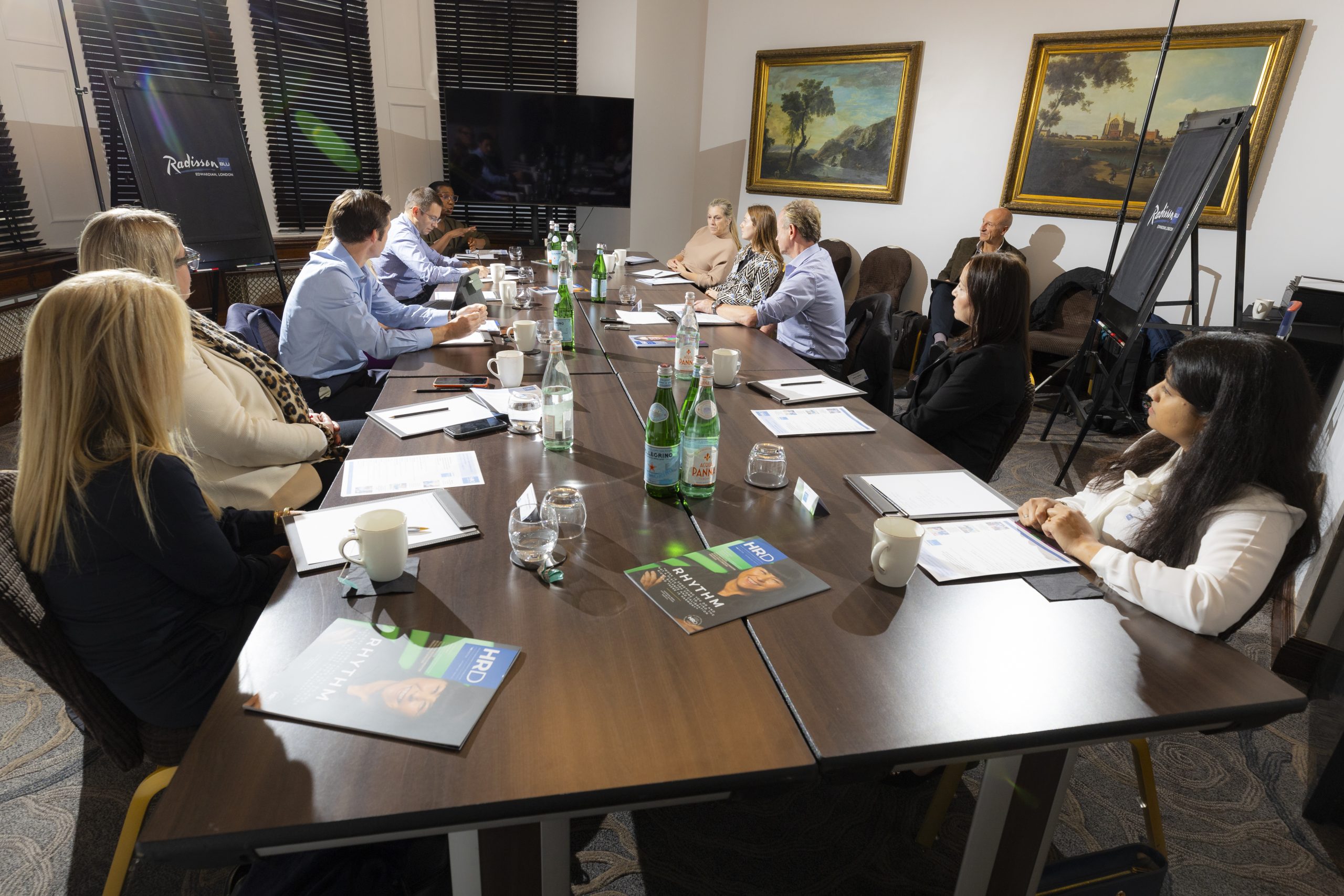
WHAT ARE THE SIGNIFICANT CHANGES I N EMPLOYEE HEALTH NEEDS AND EXPECTATIONS AND HOW IS YOUR HEALTH STRATEGY CHANGING TO MEET THEM?
Melanie Manners: Our workforce is primarily professional, global and at the younger age of the spectrum. Globally, the stresses people are facing have been considerable – COVID, war and economic downturn – and employers need to compensate with inclusiveness and connectivity. We talk a lot about global consistency, but that also needs to be local as well.
Charlotte Parnall: The personal touch and understanding differences are very important. Hybrid working has different dimensions to the past, it’s complex and a blanket approach isn’t sufficient. We need a mindset for flexibility and constructive, compassionate conversations. The education piece is the real key for us, as there are so many different layers and intersectionality.
Gareth David Hind: It’s becoming more about the whole human, it’s much more rounded than simply the employee at work and it goes beyond the business. We’ve introduced wellbeing Wednesdays – where on the first Wednesday of every month, we have a webinar focusing on a specific area of wellbeing, driven by the data. The first one was ‘healthy hearts’ and we followed that up with on the ground activity to support the messages. Proactivity around preventative is creating conversations and already changing outcomes around key HR metrics.
Jacqui McCreadie: Our business operates globally and each country has its own challenges around access to healthcare. We are also losing the social wellbeing aspect of our workplace hubs and check-ins with our colleagues are less frequent. People do miss the ad-hoc and impromptu social connections and many are working from home without moving, taking in fresh air or taking breaks, they just log on and work all day. The long-term consequences of hybrid and flex is now being bench tested in reality.

Caroline von Koenig: Perspectives are shifting from work/life balance to work/life integration, which leads to the question of what healthy integration looks like. Organisations need to step back and ask themselves, what flexible working means for them, set expectations and empower people to establish healthy routines and behaviours.
Lisa Porter: Generally, we’re much more conscious of the whole person and the family now and resilience building is paramount, supporting people to focus inwards and take care of themselves. Concurrently, employers need to go back to being more parental, to find balance, because businesses have a role to play in the wider society.
Diana Skeete: As always, there’s challenges and opportunities for businesses to make a wider difference by creating a culture of belonging and cohesion. This must not be a one-size-fits all approach, but a more integrated and intersectional approach.
Melanie Manners: Bombardment of initiatives can be counterproductive. We have actually found more traction with initiatives generated from colleagues themselves than something that is top down driven. It’s also well-proven that once somebody shares the difficulties they are going through, they are already on the road of recovery.
ARE LINE MANAGERS ADAPTING TO THIS NEW MODEL OF WORK?
Melanie Manners: The question now is, what is a manager? I see them primarily as coaches and so we need to consider what the criteria now is for management roles. In terms of health and wellbeing, managers don’t have to be able to solve things, they just need to be able to have conversations and guide people towards the support they need.
Caroline von Koenig: When looking at the role managers play, with regards to wellbeing, it’s important to be mindful that they are equally under pressure and may also need support themselves. The question is therefore, how do we empower managers, so that they in return can empower employees? It’s a difficult balance to strike, but some things such as; awareness raising, training and dedicated mental health first aiders can be really helpful. People are often fearful of having supportive conversations with colleagues experiencing poor mental health, because they are worried they don’t have all the answers.
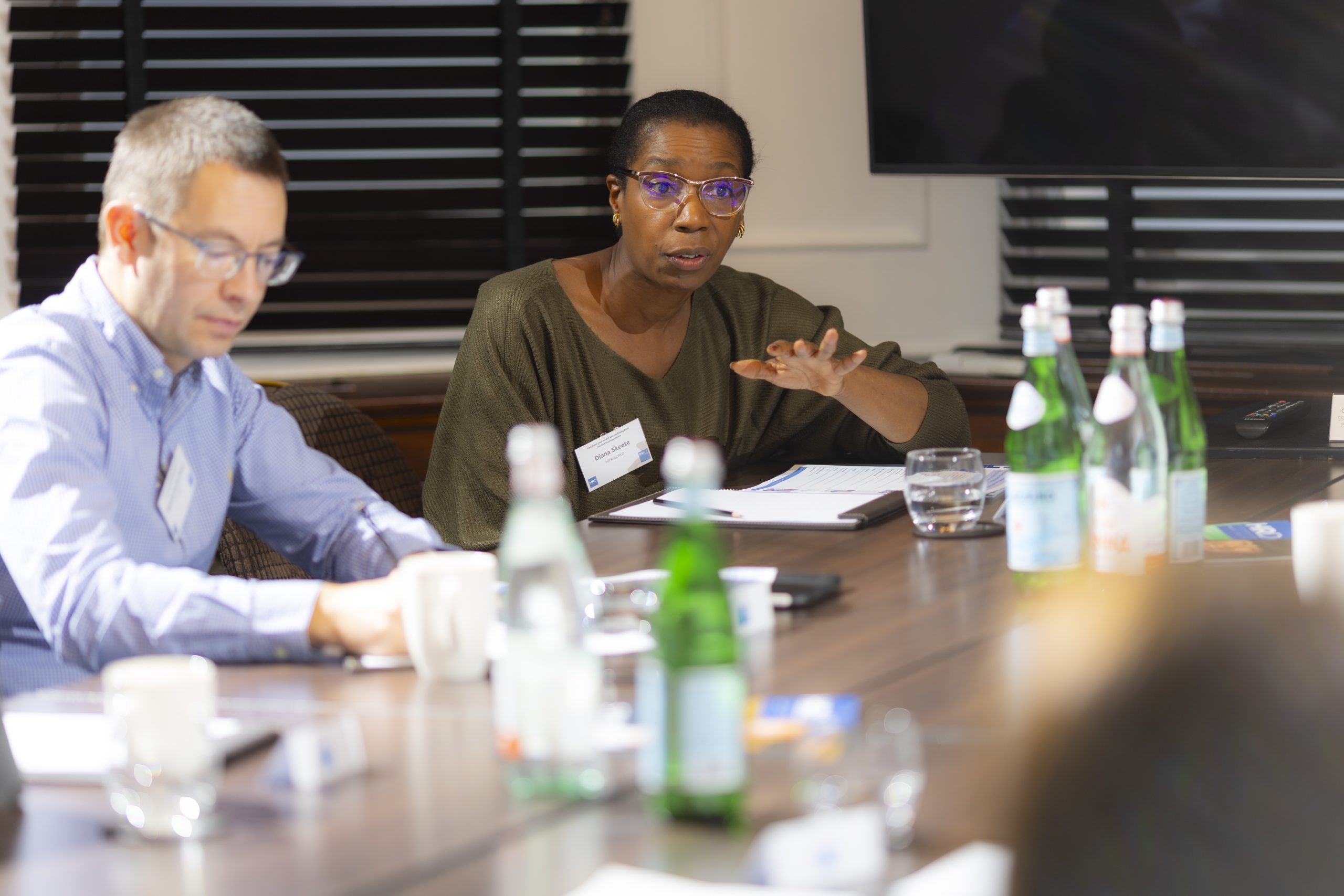
Melanie Manners: People management needs to be prioritised – a good sales manager isn’t necessarily a strong people leader – but with the right resources available, line managers are more empowered. We also need to monitor people’s wellbeing before a crisis happens, rather than after.
Amy Egginton: Engagement is so important – it’s pointless channeling resources into benefits that few people utilise. So now we are focused on content and material that is relevant, engaging and above all else relatable. Showing role-modeling and positive experience from employees is hugely compelling and helps keep the conversation flowing organically, creating normalcy and confidence. It also needs to be kept simple and comprehensive – offering too much is actually restrictive – because nobody can navigate through it to find what they need. The journey begins with inclusivity and accessibility at the top of the agenda and prevention is key. Also, personalisation of wellbeing is really important. It’s not enough to just talk about exercise and diet, we need to find out more about people and that requires more information from them, which comes with its own set of challenges around privacy and GDPR.
HOW DO YOU ENCOURAGE PEOPLE TO ENGAGE, BE MORE CANDID AND NOT FEARFUL ABOUT THEIR PERSONAL HEALTH DETAILS BEING DISCLOSED?
Amy Egginton: A digital, logged-in experience provides privacy and control – and anonymous health lines can break down those barriers – along with good relations and communication between managers and teams. There are definite signs that people are more empowered and open around their health and wellbeing.

Robin Clark: Having behavioural insights enables businesses to target specific groups of individuals and find the best way to cause a favourable behaviour change. It can make those most disengaged with health and wellbeing – typically men – take that next step. In terms of market trends, we are seeing greater awareness from companies who realise there are a broader range of ways to support their employees. Notably, there are far more requests for prevention and wellbeing support, as well as looking to provide cover for the whole of their workforce. Traditionally, in the health insurance market, it might have been directors or senior staff that had health cover, but that’s no longer the case. Increasingly, businesses are looking at products that cover everyone in the organisation. We’re seeing market shifts happening and we need to ensure the main pillars of healthcare are covered. Now we are increasingly seeing virtual GP offerings, along with wider and connected services like menopause plans and neurodiversity pathways. We should also consider the impact of hybrid working and accessibility. There are still many health taboos for people, particularly mental health and so we need to continue to work at chipping down those walls and maintain the focus that prevention is always better than cure and the earlier the intervention, the better the outcome.
Amy Egginton: When we started on our women’s health journey, menopause was the first area that we chose to focus on. T he very first starting point was, let’s talk about it, we need to break the stigma and we need to break the taboos. We introduced ‘Meno Pals’, which are internal meetings and we have a network which is really community-driven area and a lot of people have joined, including men. We now have a menopause plan and started from those initial discussions.
HOW IS LONG-TERM SICKNESS AFFECTING ECONOMIC ACTIVITY IN YOUR BUSINESS?
Jacqui McCreadie: I believe that People are working through illness now more than ever before – particularly in sectors where flexible work is most prevalent – and this may have serious long-term impacts.
Nithya Gopalakrishnan: When a staff member experiences a prolonged sickness absence, the necessity arises to engage zero hour contracts, specialists or adopt alternative business strategies to fulfil teaching requirements to cover. Our focus remains on expediting their return and mitigating costs, generally necessitating creative solutions, but the absence of early disclosure regarding health issues – often due to the absence of flexible working options for teachers, due to the nature of our business – poses a significant challenge.

Charlotte Parnall: It’s about coaching managers to be aware of those early signs in both themselves and their teams, which is hard at a time of general turmoil. Keeping a focus on education – such as building resilience, as well as tailored resources – is the best chance of overcoming the operational disruption of long term sickness.
Lisa Porter: Another consideration is that in a cost-of-living crisis, more people are likely to work through sickness and not report health concerns, with obvious consequences.
SURELY IT DEPENDS UPON THE JOB ROLE AS TO WHETHER SOMEBODY COULD CONTINUE TO WORK WHILST LONG TERM ILL?
Gareth David Hind: We’re a bus company and you cannot drive a bus from home. Most of our employees are either drivers or engineers and both require you to be physically present. The tension is keeping buses on the road, versus providing a space where colleagues can take time to recuperate from a long-term sickness. It’s a very brave thing to ask a line manager to support a colleague and create an environment where it’s okay to be long term sick, because the pressure on them to delivering on KPIs is considerable.
Melanie Manners: That is where relationships and communication are so vital.
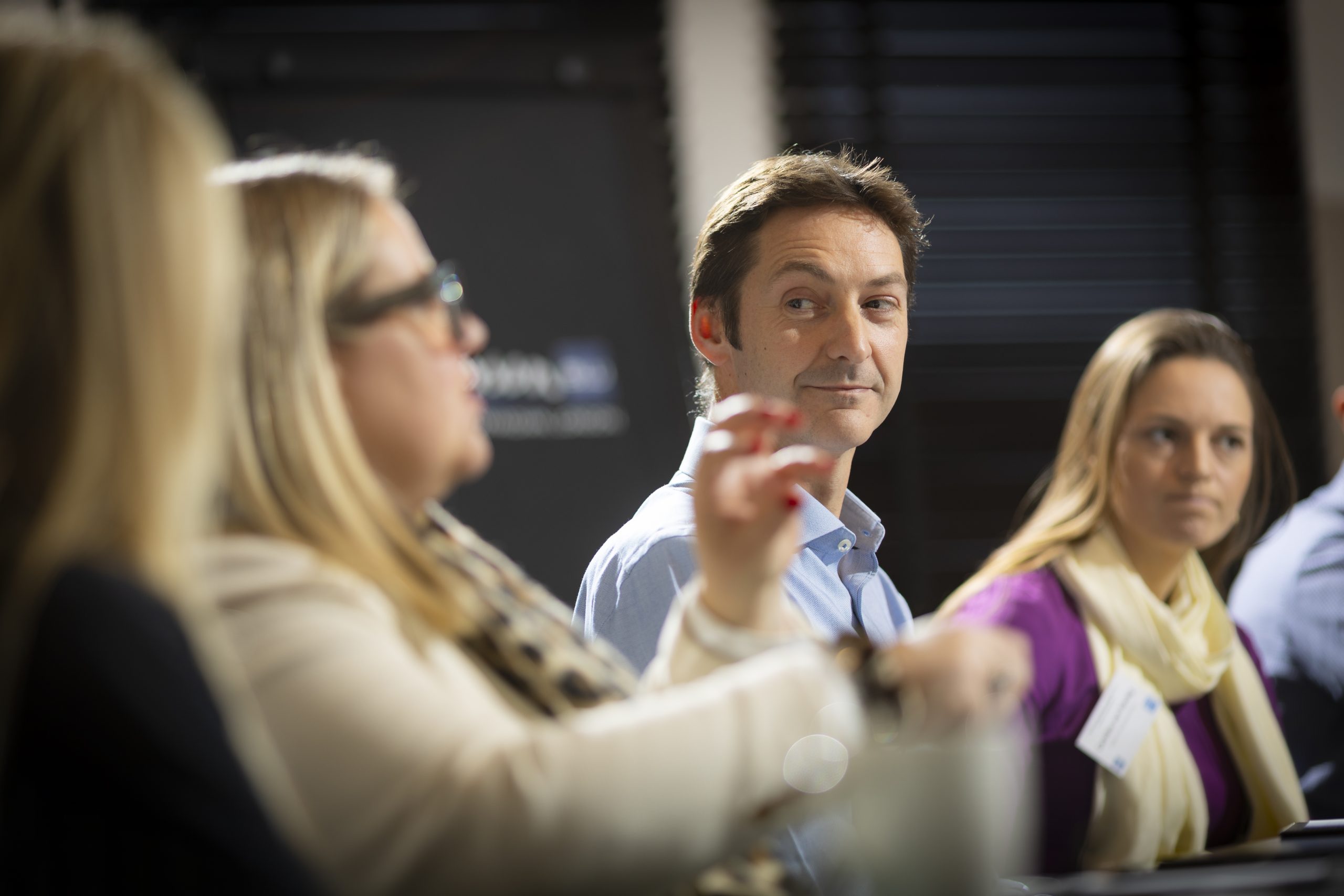
Caroline von Koenig: Having an understanding of and access to wellbeing data is crucial in order to spot any trends and make meaningful wellbeing interventions. For example, we introduced a global approach to capturing sickness absence. Employees are encouraged to choose from a list of categories and voluntarily disclose the reason for their sickness absence.
Robin Clark: Indeed, data can bring understanding of what the health risks or health needs of employees are and this can identify trends and groups of individuals that may have been overlooked. Seek and you shall find, as the saying goes and delving into the numbers really helps. It comes down to the issues that we’ve been discussing; access, culture, support networks and health literacy levels. Action could be raising awareness of what services are available or reviewing the utilisation levels of the telephone support lines or mental health service. Comparing data from organisations in the same industry may also tell a story of a gap that needs addressing.
Amy Egginton: Data informs on the past and current health of your workforce and that’s helpful from a treatment perspective. But the real game changer is prevention and the ability to predict.
Jacqui McCreadie: Agreed, new technologies will increase knowledge and accuracy, they will also bring challenges and costs in the early stages, so businesses will have to speculate to yield the longer terms benefits.
WHAT ACTIVITIES DO YOU HAVE IN PLACE TO BUILD AWARENESS AND ENGAGEMENT?
Gareth David Hind: Based on data findings, we run events such as healthy heart, diabetes and musculoskeletal. We’re putting massage workshops into all of our depots – which for a business that is 88 percent male, has caused much surprise. The problem with bus drivers is they are sat down for the majority of the day and encouraging them to, say, increase their water intake, when taking a toilet break in transit is tricky, is a difficult message to land.

Robin Clark: Gareth has typified the problem, building better health habits around life and work is difficult and every organisation will have its own unique challenges. But it’s really about the detail, the culture, structure, systems and the processes that mean that some things work for one employee group, but not for another one. It’s those nuances that really do make the difference.
WHAT HEALTH AND WELLBEING INITIATIVES ARE YOU PROVIDING TO HELP PREVENT CHRONIC ILLNESS AND ARE YOU CONSIDERING A MAJOR CONDITION STRATEGY FOR YOUR ORGANISATION?
Melanie Manners: We’re a scale-up company and so there is quite a bit of flexibility when it comes to policies and we tend to be quite policy lite. We actually put a lot of focus on purpose and what matters when it comes to health and other policies and we try to keep the messaging simple. As a company working in the genomics field, we talk internally about genetic make-up.
Jacqui McCreadie: We are in 40 countries with 7,500 employees and we need different wellbeing strategies for each context. We don’t have a comprehensive preventive plan yet, but we have some wellbeing champions who are raising awareness. People’s needs and priorities change over time, depending on their current situation and future goals.
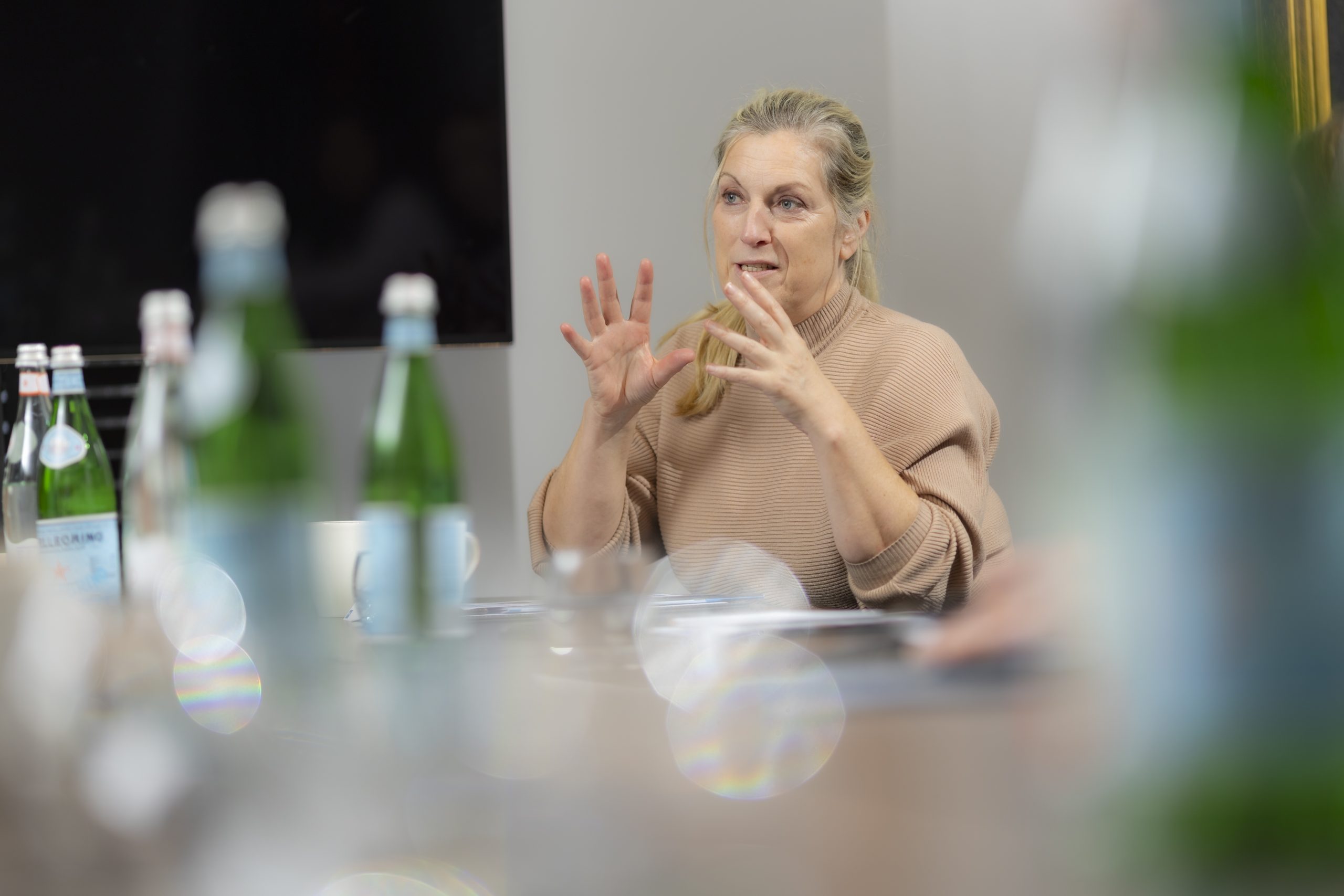
Caroline von Koenig: When thinking of prevention, having an established, globally consistent approach to workplace adjustment is key. Whether that’s providing workplace strategy coaching, different equipment or assistive technology, workplace adjustments can help employees that do have a health condition to stay in work and better manage their symptoms.
Robin Clark: There’s a lot of research underway at the moment, trying to identify better ways to screen people for cancer and identify cancer at an earlier stage. There’s some great technology being tested, but we are mindful that it could create some inefficiencies, confusion or give false reassurance. We are very much staying close to the evidence as it develops, but certainly think there’s going to be benefit, in terms of being able to better risk stratify people, offer more personalisation and better target offerings. Using polygenic risk scoring could help identify if are you high, middle or low risk and give more direction to when you should start a cancer screening programme, for example.
Charlotte Parnall: We’ve a very young workforce and so chronic physical conditions are less prevalent. But that means we have the opportunity to help people make lifestyle choices early, which could really benefit them and employers in the future.
Gareth David Hind: We don’t have a major condition strategy, but where we do really well is the drumbeat of what is available and that works for our workforce.
DO YOU BELIEVE MOVING FURTHER TOWARDS A PREVENTION APPROACH WOULD ACHIEVE BETTER HEALTH RESULTS FOR YOUR WORKFORCE?
Amy Egginton: What is essential to helping people proactively manage their health and wellbeing and be accountable. Health assessments and health coaches help people to stick to diet and exercise plans and follow-ups and regular checks – whether virtually or in person – keep people on track.
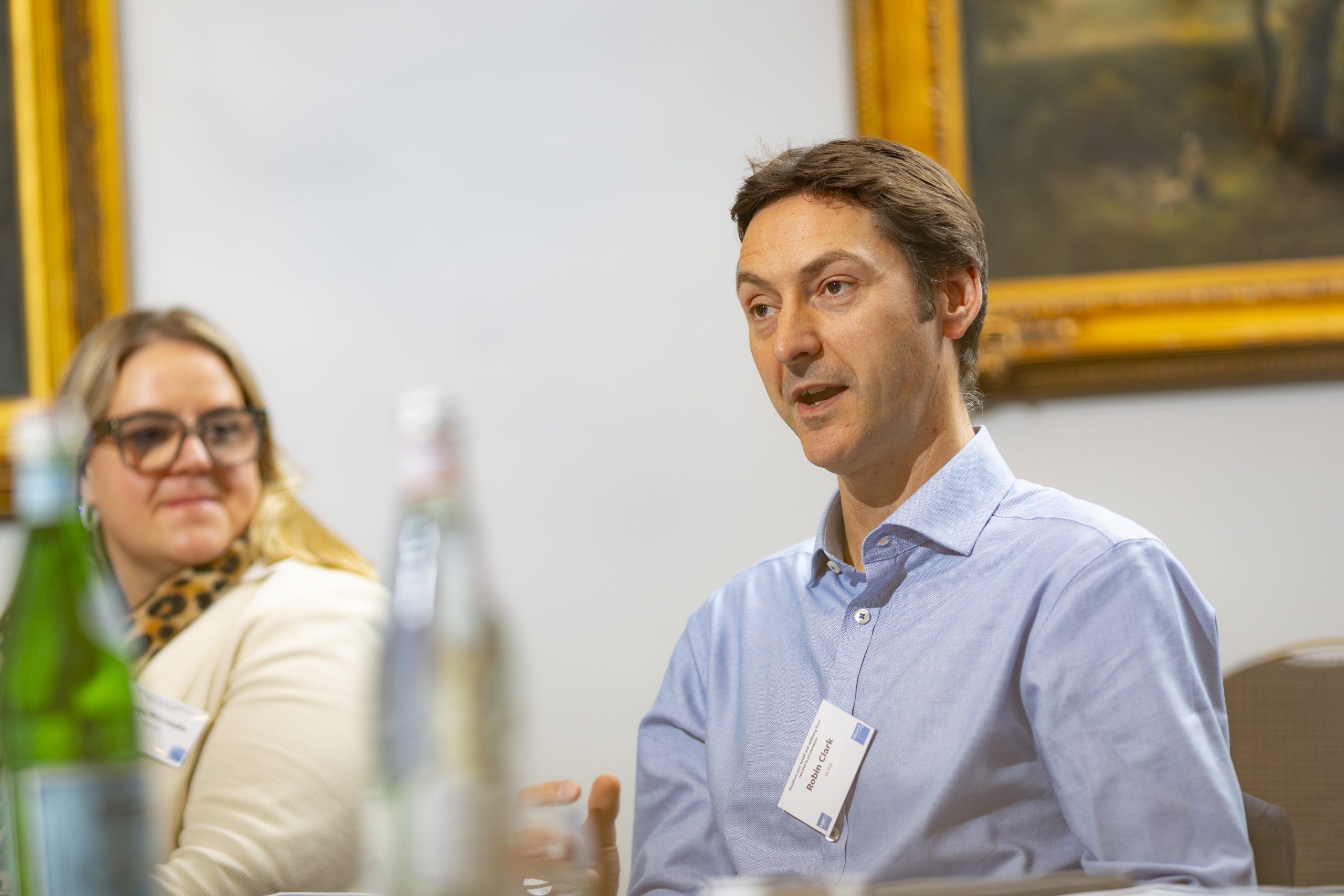
Lisa Porter: It’s in the data, it’s understanding where our problems are going to lie and dealing with them and it’s removing the stigma and promoting openness. If you’re diagnosed with an illness that’s going to affect your life and job, the message has to be one of support, not threat of job loss.
Charlotte Parnall: Agreed, it’s about irradicating stigma, education and creating a positive attitude around health and wellbeing. If somebody has really benefitted from a benefit, encouraging them to talk about their experience is so compelling.
Diana Skeete: One of the benefits of prevention is that it’s a future vision and for employers, that’s a really good tool for being an attractive employer – particularly to people aged 40-plus – and this builds a trust and a sense of belonging, which galvanises engagement, productivity and retention.
Gareth David Hind: Prevention could mark a revolution in health and wellbeing, as it surrounds building good habits. We held the Great First Bus Expedition – a steps challenge – and we invited colleagues to take part in a collective activity across the business, to walk five million steps. It ran over two weeks and we actually reached 39.8 million steps. The costs were minimal, but the results were priceless!
Jacqui McCreadie: We need genuine and lasting strategies, it is not enough to implement a quick fix and then move on. There are many aspects that we need to address and we must invest in preventive measures and screenings that will reveal the problems. This will also entail time off and interventions to manage them in the long term and so we need to be committed and authentic and follow through with this plan.
Nithya Gopalakrishnan: Peer support is crucial, as addressing topics like chronic illness is more effective when shared by someone who has experienced it. It’s about breaking down barriers, moving away from traditional HR initiatives and embracing a community-driven approach. Leveraging the expertise of individuals within the organisation, who have navigated such challenges, serves as a more effective coaching mechanism than a formal HR presentation.
Caroline von Koenig: When talking about culture, people often reference an iceberg, where we see some things on the surface, but actually what’s under the surface is unseen and much bigger. The same applies to preventative employee wellbeing initiatives and campaigns.
Melanie Manners: If you have a very reactionary culture, you spend all your time dealing with ER cases and they are always disruptive and cost money.
WHERE DO YOU SEE THE POSITIVE SIGNS THAT PREVENTIVE STRATEGY IS CREATING A SELF-RESPONSIBLE MINDSET IN THE WORKFORCE?
Robin Clark: Prevention is always better than cure and whichever way you look at it, it’s the way forward. This covers everything from screening to inviting your whole organisation to have a finger prick check for diabetes, right through to secondary prevention. Secondary prevention is for those people that already have health conditions and optimally managing them, so that they don’t progress to have a heart attack, another stroke or further complications. Again, there are different ways of tackling these issues, depending upon the makeup of your employee base, but if you have data to understand their health needs and what healthcare they’re accessing, this reveals the bigger and more detailed picture. On an environmental level too, we know healthcare is a big polluter worldwide and contributes to significant levels of environmental carbon dioxide. Therefore, the earlier we identify illness and disease, the less treatment is required and the better the outcome, not just from a patient and cost point of view, but from an environmental perspective as well. There’s a virtuous circle that occurs that is hugely compelling.

Amy Egginton: This doesn’t have to be always like a big bang event, like any shift, it can start with really, tiny steps. Start by looking at what currently exists already within your organisation in terms of health and wellbeing, as every business has something in place and so there will be some foundations that can be built upon. But a word of warning there has to be substance, just throwing money at a marketing campaign, will not resonate. To really change the culture, you have to keep pushing, slightly and subtly.
Jacqui McCreadie: We have designed peer-to-peer support groups that help our employees through many of life’s challenges and we have groups for chronic illness, menopause and various types of parenting and caregiving. These enable people to share their experiences and support each other, as well as advocate for policy changes where required. The voice of the people in these issues is essential for finding effective solutions.
HOW DO YOU KEEP THE MOMENTUM AND AVOID INFORMATION FATIGUE?
Lisa Porter: It’s about finding interesting and creative ways, with your audience in mind. It’s also taking responsibility for horizon scanning and seeing what is out there in the wider world and comparing efficacy.

Caroline von Koenig: It’s important to make it as easy as possible to find information and communicate available wellbeing support. For example, we’ve taken the approach of having a four-pillar strategy of; workplace, mind, body and life – which also includes financial wellbeing and policies such as enhanced parental leave and family care leave. Then we have quarterly spotlights on these four pillars. Another potential approach is to have guidance that is based on various scenarios, whether that’s a health or life event or something workplace related.
WHAT ROLE COULD GENOMICS PLAY IN THE PREVENTION REVOLUTION?
Robin Clark: This is a really exciting area, because it has the potential to be a real game changer for our understanding of individual risk and testing and treating people on a personalised basis, with preventive and precision medical intervention. We have many current examples of this in use, where people are being treated for cancer. Biopsy samples of the tumour can be sent to be genetically profiled, which gives a really good indication of which drugs will work or not against that individual’s particular cancer type. Cancers change over time, so periodically, we might need to repeat the testing to see whether the same treatment is going to remain effective. Then in the preventative or screening space, the genes can be used to identify who currently has disease, or who has a gene or collection of genes which puts them at higher risk of developing a condition in due course. It means clinicians can better risk stratify people and can give them more specific advice on diet, health or lifestyle, or when they should enter a formal screening programme. For inherited genes, this knowledge can be beneficial for their wider family too. Genetics and genomics are already causing some really significant shifts and will continue to do so over the coming years.

Amy Egginton: From a purely insurance perspective, what that is informing is the risk factors and to avoid anti-selection, you would effectively just re-adjust your policy for everybody. You might take out some outpatient benefit limit that didn’t necessarily work and put it into mental health, or you might put it into MSK, or any other area requiring extra resourcing. So, there are levers that you could pull within your policy, but it is the intel on risk factors identified through screening that is key.
Jacqui McCreadie: Trust in the workforce is a key factor for preventive health care to be effective. Some people may not want to be tested or want to know their health status. They may doubt the confidentiality and the intention, especially true for workers who fear losing their jobs if they have a health problem. Confidence and reassurance are essential components too.
Robin Clark: You can look at sustainability through different lenses – environmental and financial to name just two – and the reality is, healthcare cost inflation is greater than general inflation and every year there’s even more expensive treatments available. The ultimate protection from rising costs is to avoid people needing healthcare in the first instance and identifying disease at the earliest opportunity, to prevent progression. Healthcare is cheaper when the need for it is identified earlier.
Amy Egginton: We have discussed the difficulties associated with engaging people in health and I think having a really sustained approach is key to overcoming this. When events like World Menopause Day and World Cancer Day arrive, there tends to be a surge of activity and then interest disperses. So the element of sustainability of health and wellbeing running throughout everything that you do, keeps the messaging constant, but not overpowering. It’s about having a preventive approach and a culture of accountability running as threads through everything you do, all of the time. That’s how you change perceptions around health and wellbeing in the workplace.

FOR FURTHER INFO WWW.BUPA.CO.UK









